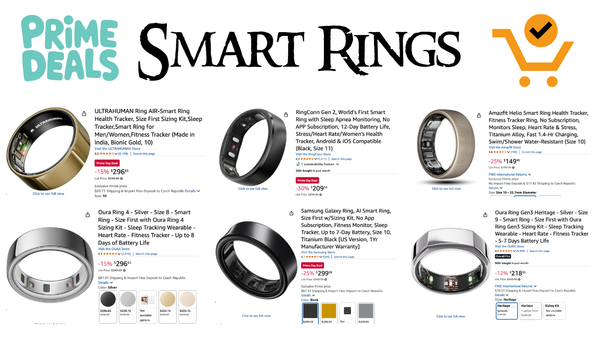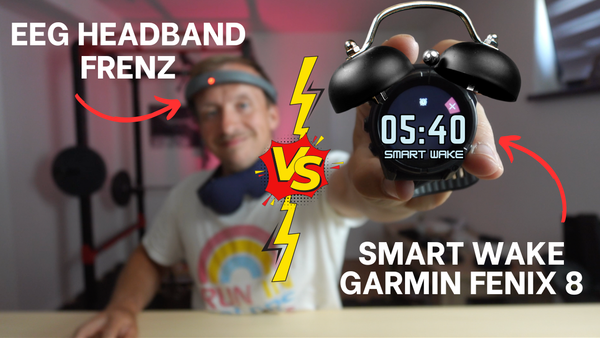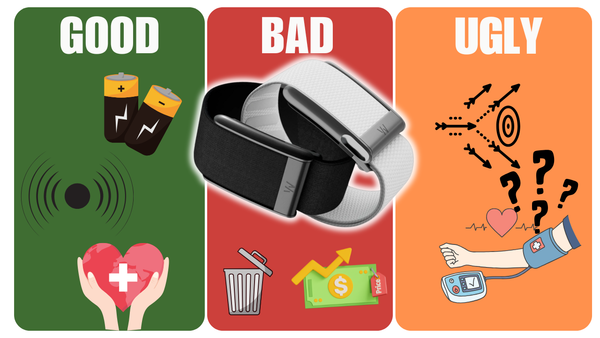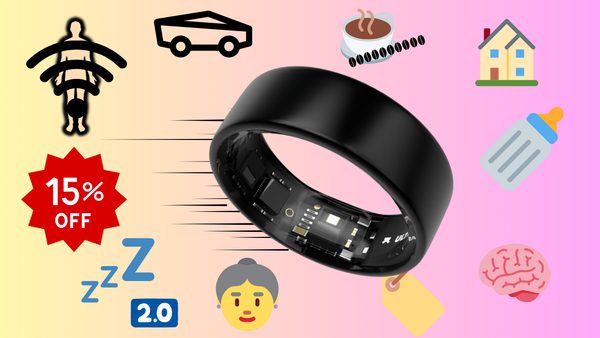Muse One Ring — The ring that does it all?!
As I’ve outlined in articles below about the Iris (Velia), the Samsung ring, the next-generation Circular and more, there’s a flurry of…
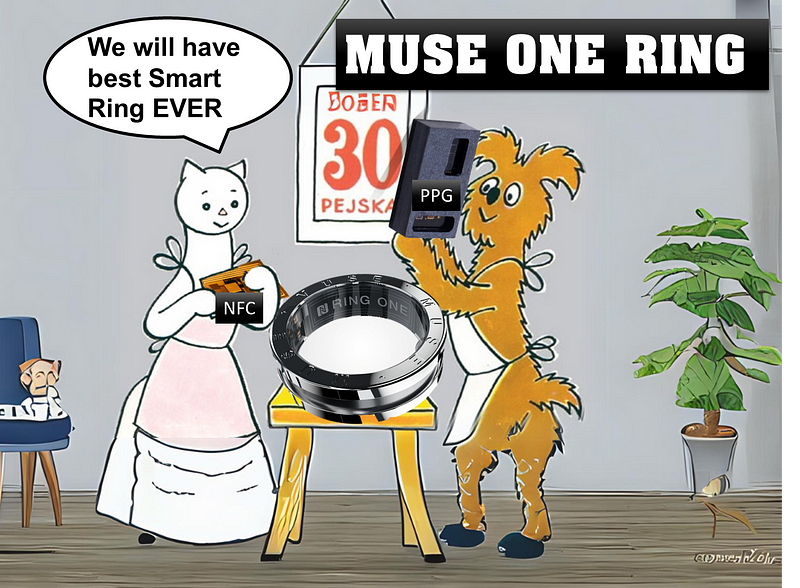
As I’ve outlined in articles below about the Iris (Velia), the Samsung ring, the next-generation Circular and more, there’s a flurry of new smart rings on the way.
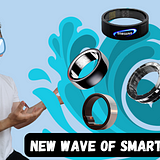
And one of them is Muse One Ring. So I will now return to the established process of three releases (see below) with the first part, Expectations, where I will review what we currently know and what we can expect from this ring.
❓ Expectations ➜ 🤔 First impressions ➜⭐ Reviews
Context of the article
I’m publishing this article at a time when I own a third-generation Oura ring, an Ultrahuman Air, a Circular v1 (a “v2 release” is currently being announced), the Swiss saviour Iris has been renamed Velia, and smart rings in general are experiencing a major boom, as evidenced by the big money being spent on Kickstarter campaigns.
I also have a sizing kit, which is standard equipment to properly size the final ring. The peculiarity of smart rings is that you have to choose a size first, and the safest way to do this is to use the test plastic rings in the sizing kit.
Why Muse a ring
Smart rings are starting to proliferate at a great rate, so when I register a new one I immediately think “oh my goodness, another ring” followed by “what makes this ring special? Does it really bring something new?
As for the second question, I found 2 functionalities:
- NFC for contactless payment
- Blood pressure measurement
If this is confirmed, the Muse One Ring will be the first ring with these functionalities. The other functionalities are, let’s say, standard.
These features are also worth mentioning, but they probably wouldn’t have convinced me to buy it on their own:
- The rotating wheel on the ring body — this is meant to be used for certain control options (e.g. activating payment).
- A lifetime subscription, which is clearly defined against the Oura ring and its monthly fee for full use of the app.
- Support for all fingers.
- Two-year warranty.
Manufacturer
Before we get into the specifics of the ring, let’s take a look at the company that makes it. It’s an Indian company called Muse Wearables (Conzumex Industries), which was founded in 2016 and has the following products in its portfolio:
- The Muse Watch, which by the way (also) went through a Kickstarter campaign.
- Muse GTag — which is a rebranded CGM (continuous glucose monitoring) sensor from Freestyle Libre with a subscription app to analyse the values measured by the sensor.
- The new One Ring — which has the distinction of being the most funded smart ring and the fastest campaign ever.

The above information makes me think of 2 things in particular. First, I see a strong similarity to Ultrahuman due to the home country and the CGM sensor. And secondly, an optimistic view would be that Muse should have solid experience in both important parts of wearable electronics development — HW and SW.
I was rather sceptical about the promised functionality, but what surprised me was the level of detail in the articles on medium.com (links at the end of this article), which were very specific. The whole thing gives the impression that you are going to support/buy a finished product, not a project that will take years to develop.
HW
In this chapter we’ll break down what we know about the sizing kit, the charger and of course the ring itself.
Sizing Kit
The Sizing Kit contains 10 sizes of test rings with instructions on how to find the optimum size.
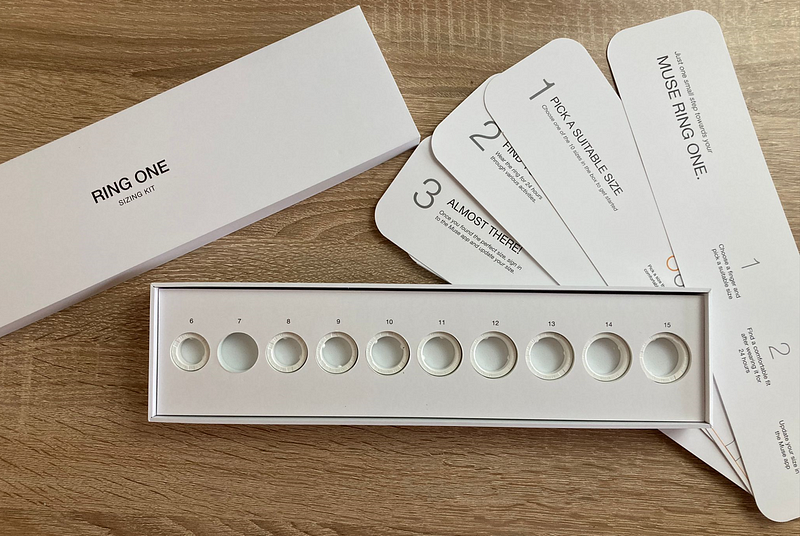
There are general principles that apply to all rings, which I have written here:
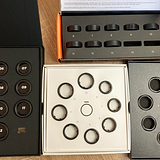
Charger
Judging by the documentation used, it seems as if Muse has tried to squeeze as much as possible out of the ring charger. Wireless charging via the USB-C port is standard, but other features are a little beyond the pale, and Muse can boldly claim that the smart ring also comes with a smart charging box:
- Bluetooth connectivity
- Buzzer
- Button
- LED indicator
Among other things, it can act as a smart wake-up call, guide you through breathing exercises, and find your charger thanks to the ‘Find my’ feature in the app.
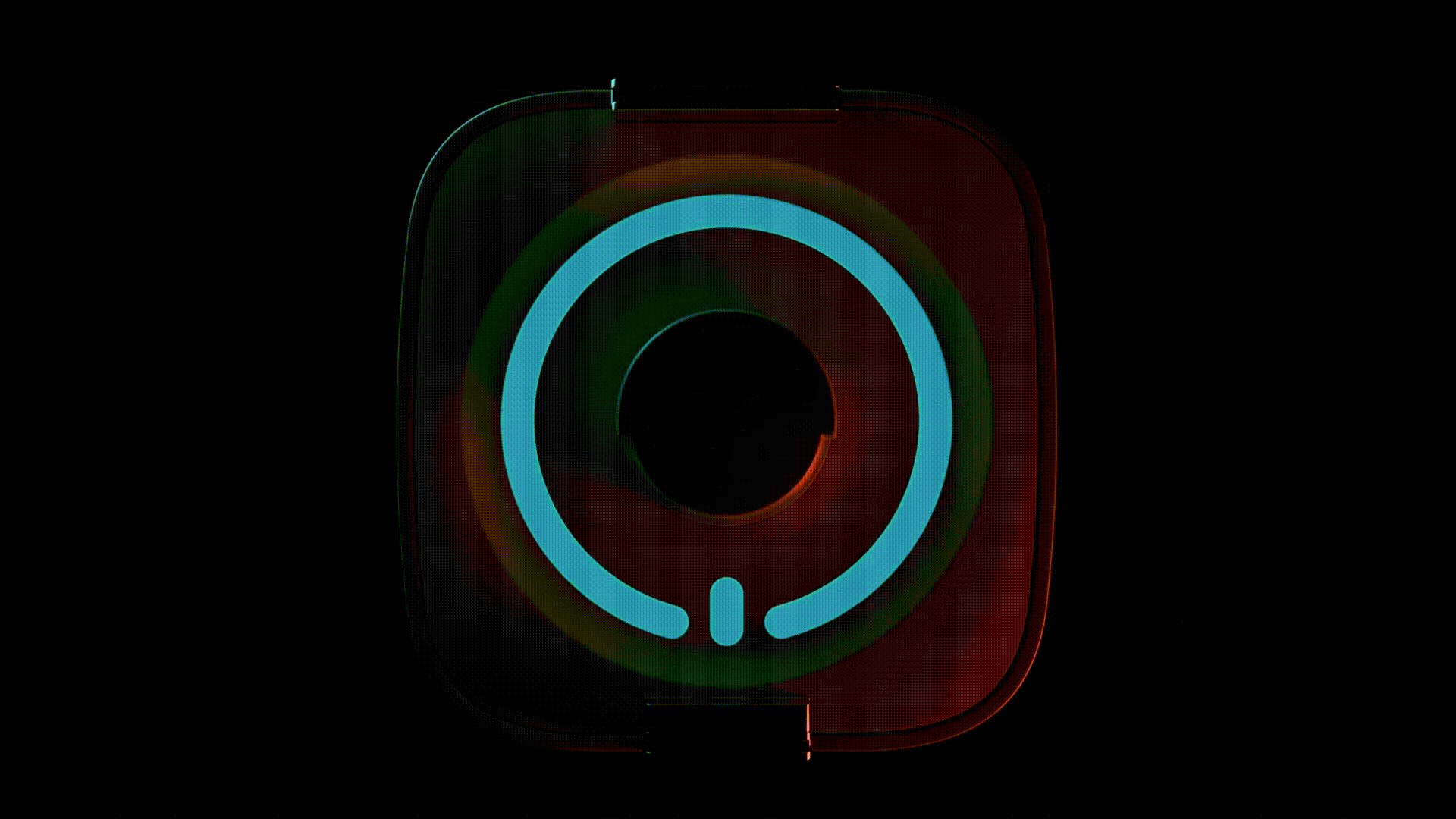
This is the part of the article where I provide a comparison chart with the competition. Muse did a lot of the work for me here.
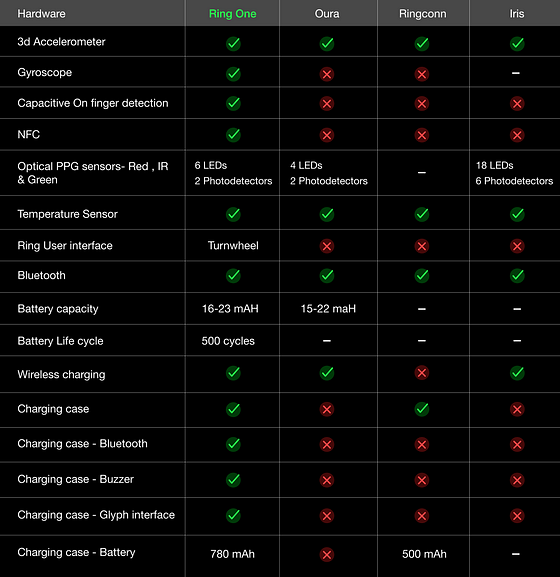
Some data is missing from competitors, but I have not seen any outright false data.
The capacitive sensor is supposed to be used to recognize “your” finger (?!) and thus secure payment/authorization via the NFC chip.
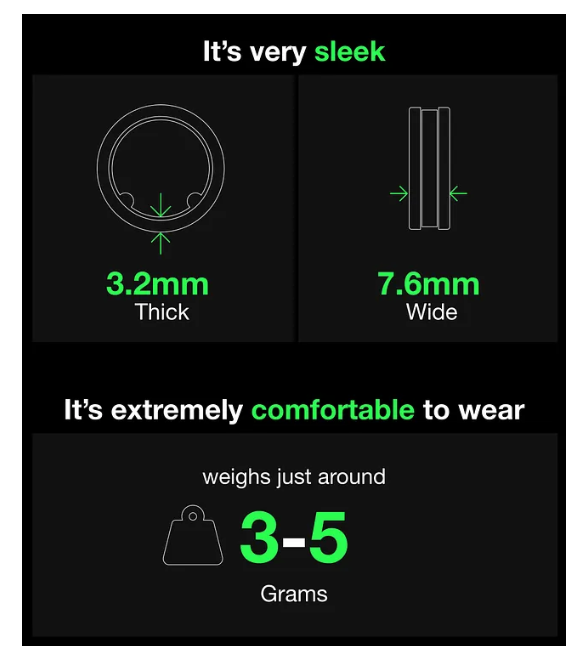
SW
In the field of SW and body metrics, it is probably impossible to come up with anything completely new. So we find the usual division into Sleep, Activity and Readiness.
The basis, of course, is the aggregate score from each area, and Muse promises some insights, i.e. verbal insights/recommendations based on the data.
Muse provides detailed metrics with comparisons below:
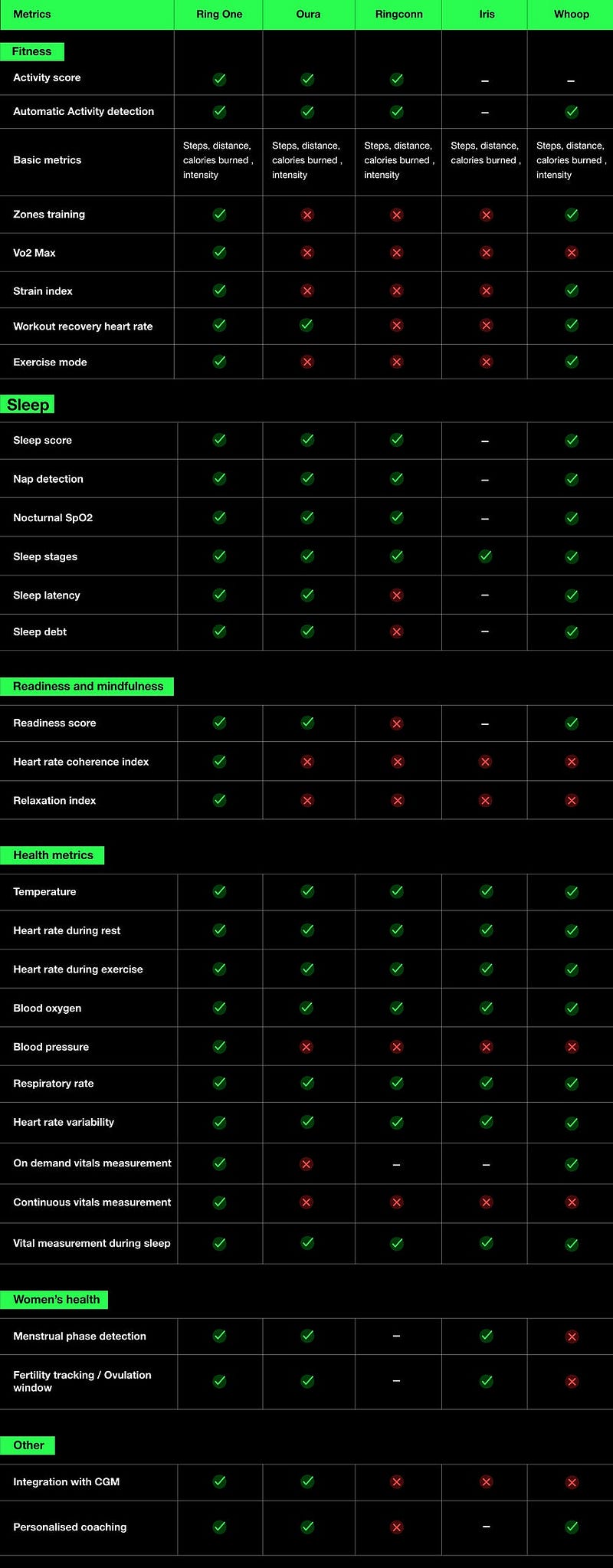
I’m very curious to see what state the app will be in and what it will be able to do. In other words, which features will be available immediately, and which will take years to develop, as we know from competitors. A public roadmap could give us an indication:
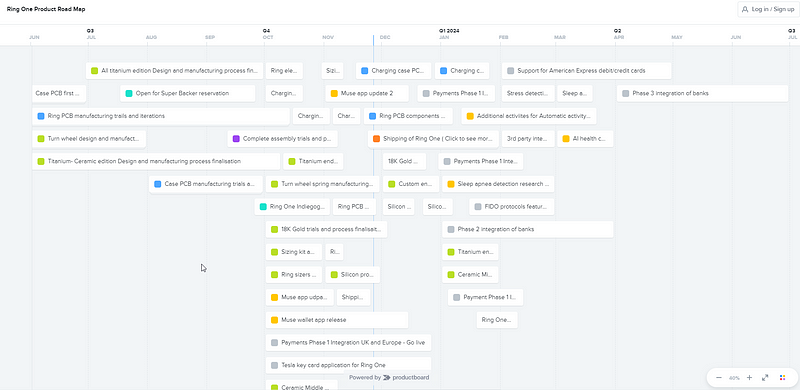
Next, I have a few observations:
- Muse openly states that the general problem with optical PPG sensors is motion. This leads to inaccurate (“noisy”) data. However, he tries to capitalise on this admission by also claiming that by combining a 6-axis accelerometer and gyroscope, he is able to accurately detect motion and therefore remove this noise from the data. My understanding is that it measures “at rest”.
- There is new metric: strain. The term strain will be familiar to Whoop wristband users. It is an expression of whether or not you should be working hard during your workout. Muse uses continuous measurements of heart rate, respiratory rate and heart rate variability to calculate strain.
- Activity — The One Ring is supposed to have AAD (Automatic Activity Detection) and at the same time the rotating ring of the ring body is supposed to be used to activate the workout mode, thus increasing the frequency of HR measurements.
- Blood pressure measurement — as mentioned below, the One Ring is said to be the first ring to measure, i.e. estimate, blood pressure at the level of a classic blood pressure monitor.
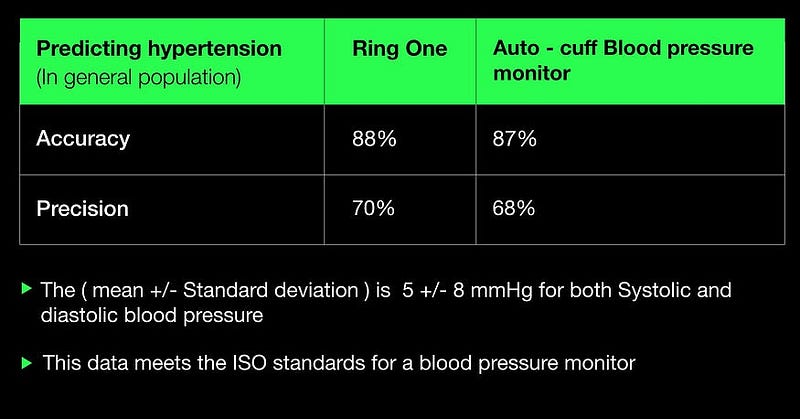
Conclusion
To be honest, I have big doubts about the readiness of these functionalities. It almost feels like a fairy tale…
However, if the One ring can do everything promised in reasonable quality, it will be a true, quite robust, but very well equipped ring. Apparently a lot of people are hearing about the NFC authorization/payment and blood pressure measurement options. I’m very curious!
As for the price, it’s currently still available for the kickstarter price of $259 (later it should be $349 ) and it’s here:
https://fitnesator.link/onering
Sources
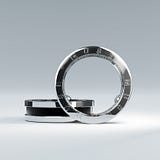
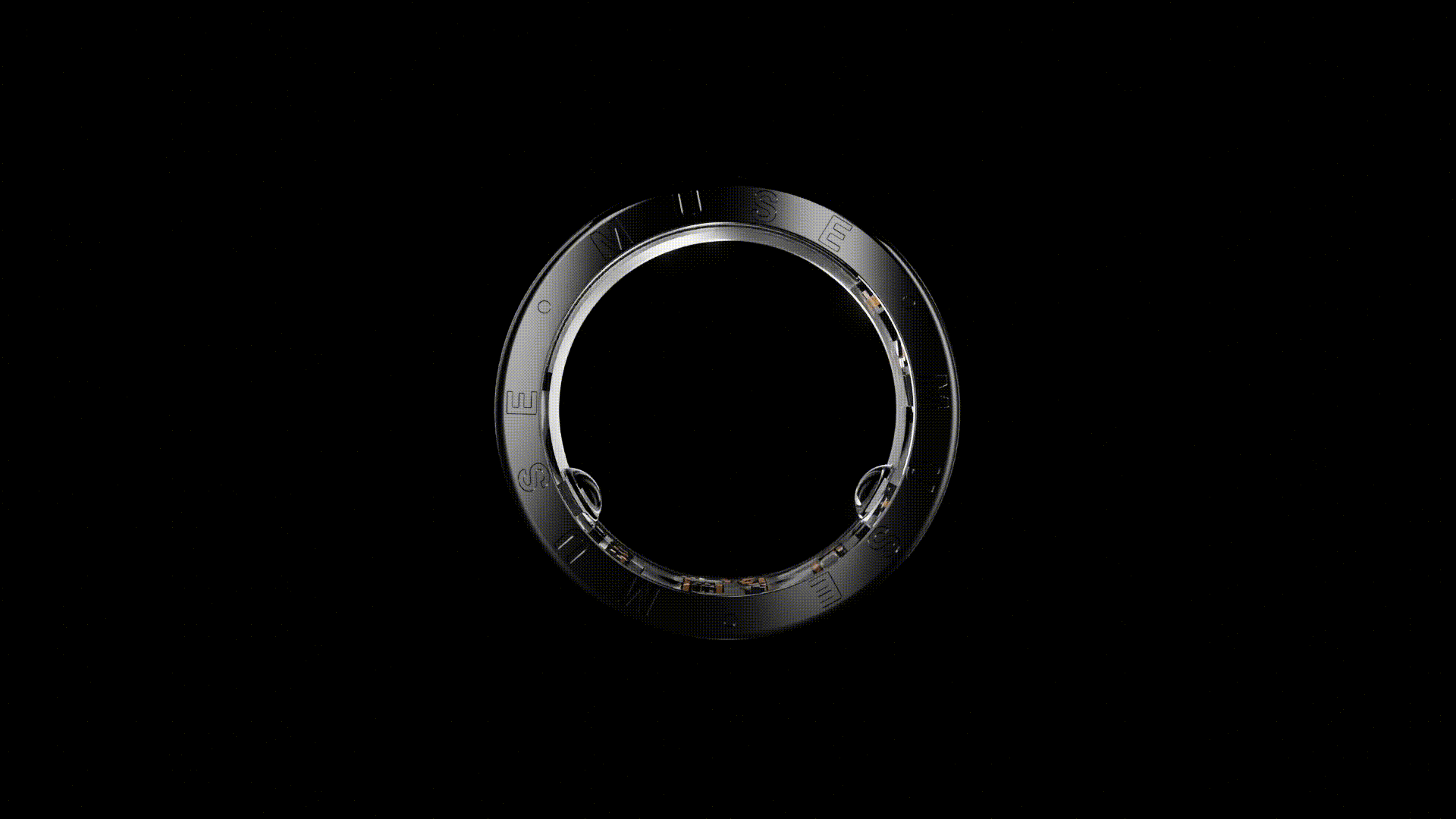

💍 OURA 3 –40–100 EUR DISCOUNT — https://fitnesator.link/oura
💍 CIRCULAR RING 8% DISCOUNT — https://fitnesator.link/circular
💍 RINGCONN DISCOUNT code “BFD50EC126)” — https://fitnesator.link/ringconn
💍 ULTRAHUMAN AIR DISCONT CODE -50 $ — https://fitnesator.link/ultrahuman
